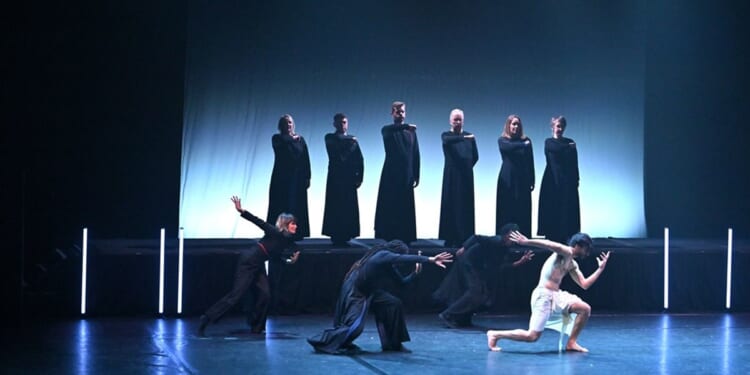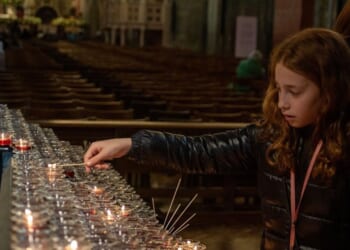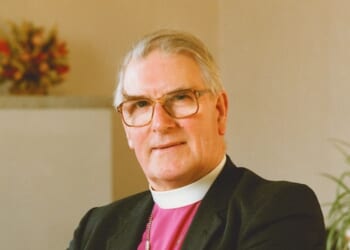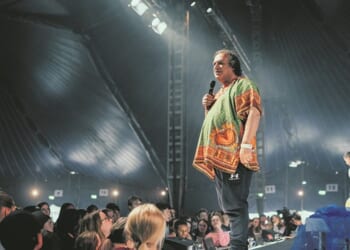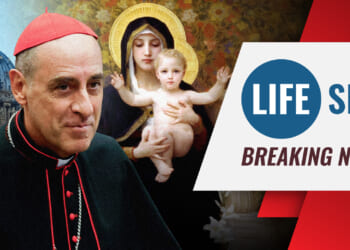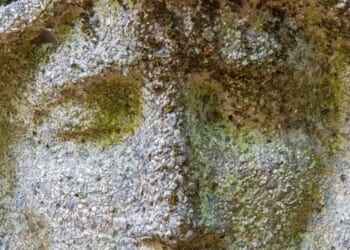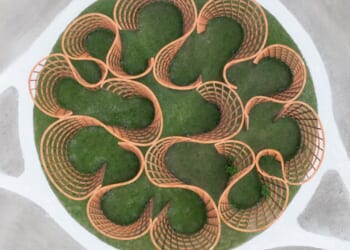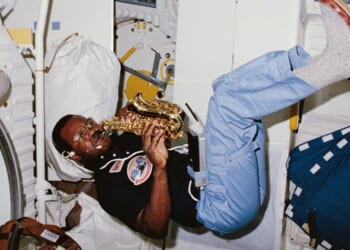CARLO GESUALDO (1566-1613) was not a happy man. His 27 settings of the Tenebrae responsories — verses sung as a response to readings at the service of Tenebrae on the last three days of Holy Week — were his own reaction to his lifelong guilt at murdering his wife and her lover, and perhaps not the most obvious soundtrack to a dance project. All the more credit, then, to Les Arts Florissants and the French Amala Dianor Company for using nine of them as the basis of a most unusual choreographed retelling of the Passion story, Gesualdo Passione, in the Barbican Hall, in London, this month.
With a dawn-pink light projected on to a back screen, six black-cassocked singers and four dancers moved forward en masse slowly and gravely on to a stage bare except for a raised platform. The singers, directed by the tenor Paul Agnew, had Gesualdo’s strange, chromatic harmonies by heart, leaving them free to participate in the action. Damiano Bigi’s white-clad Christ prays to his Father on the Mount of Olives, and the singers intone “Fiat voluntas” (Thy will be done) and hiss “Amicus meus osculi me tradidit signo” (My friend betrayed me with a kiss), with surtitle translations. The line from Lamentations “Ierusalem, convertere ad Dominum” (Jerusalem, return to your Lord) runs as a thread throughout, perhaps drawing our attention to the current state of the world.
As we moved to the Responses for Good Friday, Bigi was stripped to his loincloth. Music and movement fed off each other. Clément Nikiema’s Judas scurried away after his treacherous embrace, finally standing on his head in a long-drawn-out expression of torment. The performers pointed accusing fingers and carried Bigi to his death. There were some lovely tableau moments when everyone froze, most notably cradling Bigi’s limp body in a pietà.
Xavier Lazarini’s strikingly effective lighting represented with neon rods the candles slowly extinguished by the end of the Tenebrae services. Elsewhere the stages was misted, the performers in silhouette, or plunged in Caravaggio-like shadow. Amala Dianor’s universal choreography drew on classical ballet and street dance, tai chi and Irish folk, beautifully executed by lithe and nimble performers, even if the sequence in which they stomped rhythmically before Christ’s dead body was a little too close to Riverdance for comfort.
Faced with so much artistic excellence, it would perhaps be churlish to suggest that the vast spaces of the Barbican created a distance between performers and audience, and its emotional immediacy would have been better served by a smaller and more intimate venue.

